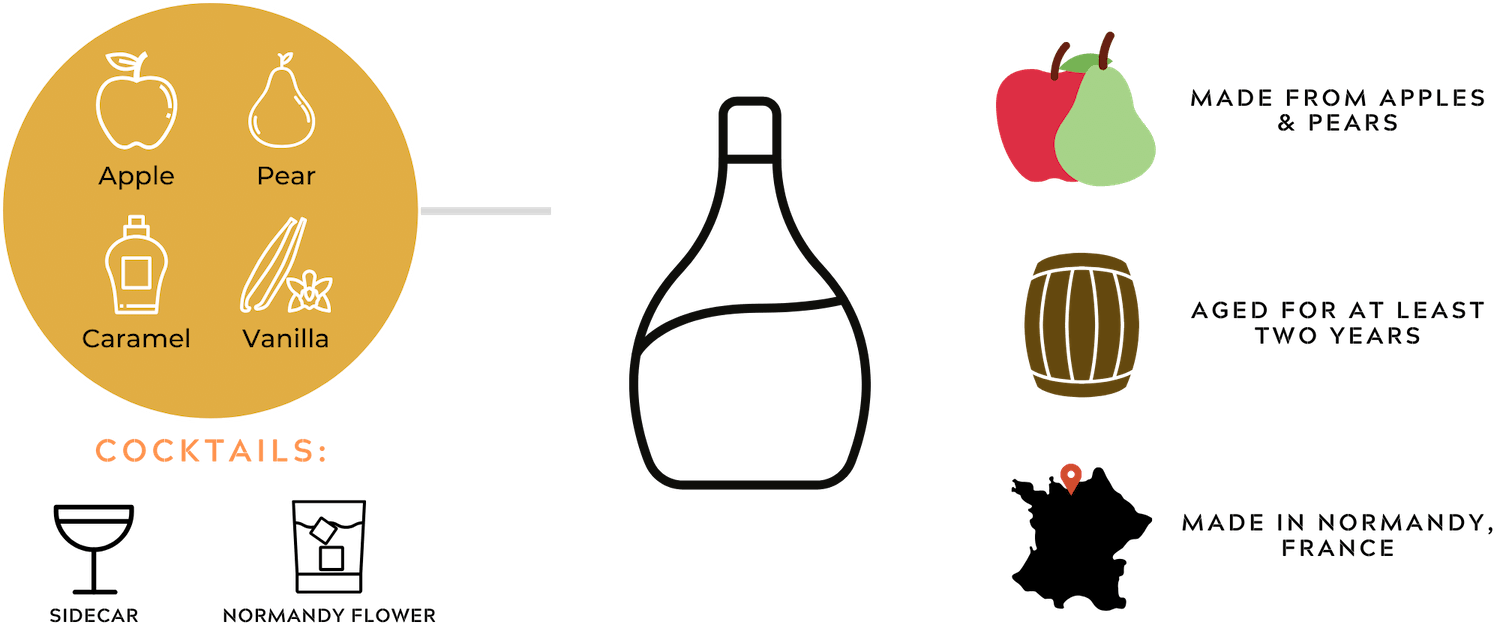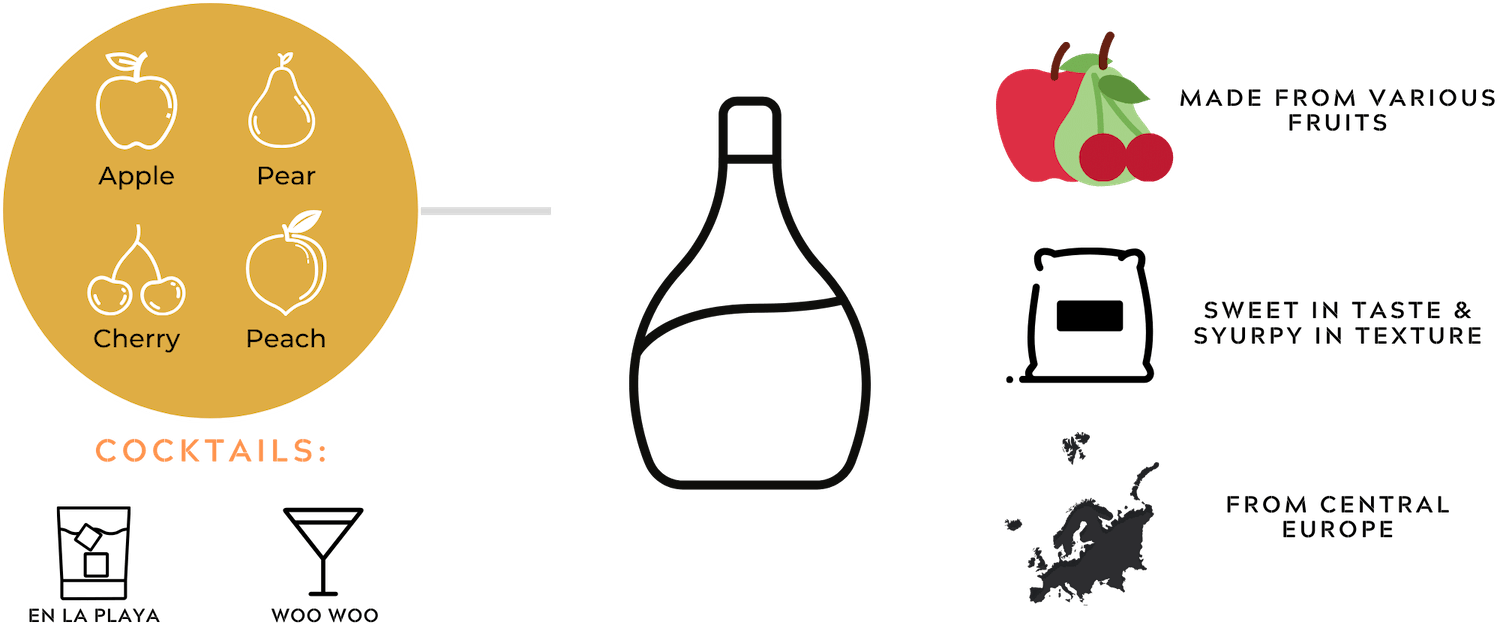Although the term brandy is most commonly associated only with those spirits that are produced from distilled grape wines, it is possible to produce brandy from many other types of fruits than grapes.
Three of the most prominent examples of fruit brandy produced around the world include Applejack, which is an American apple brandy produced from the distillation of hard cider, Calvados, a type of apple or pear brandy produced in the French region of Lower Normandy, and Obstler or Schnaps, a Central European fruit brandy that can be made from a variety of five fruits, including apples, pears, plums, cherries, and apricots.
Although many more examples exist in Eastern Europe and Africa, these three types of fruit brandy represent the products most readily available for purchase internationally.
This type of distilled apple fruit brandy was once extremely popular in the United States and was historically produced by freeze distillation, a rather simple method of separating water from alcohol.
Even though it is no longer as popular as it once was, the spirit is revered by those who love it for its strong taste of apples and baking spices, and it can often be aged in former bourbon and other whiskey barrels for added depth of flavour.
This article helps to explain in fine detail some of the important distinctions that make applejack so unique.
A number of famous cocktails require the drink, such as the Jack Rose or Whopee, although it is possible to enjoy some of the more well crafted and aged Applejacks neat or over ice.
All of the biggest producers of the spirit today are from America and include Laird’s Applejack, Barking Irons Applejack, and Black Dirt Applejack.
With its roots extending as far back as the 16th Century, Calvados is a type of apple or pear brandy produced exclusively in the Normandy region of Northern France.
The fruits used during its production are only permitted to come from this particular region and the distilled spirit must be aged for a minimum of two years in oak barrels before it can earn the distinction of being called Calvados.
Under French law, Calvados producers are permitted to follow either a double distillation process, using a traditional alembic pot still similar to the one used in Cognac and resulting in the distinguishing title of AOC Pays d’Auge, or a single continuous distillation process in a column still, producing AOC Calvados.
Typically speaking, younger aged Calvados bottles are strongly reminiscent of fresh and clean flavours of apples and pears, whilst the longer the spirit is aged, the more depth of flavour that is produced as it draws further character from the wood.
This article offers more detail on how the production processes and ingredients used during production influence the taste of the final bottle of Calvados.
The French always enjoy Calvados neat as an aperitif before their meal or as a digestif after one but also follow the traditional practice of Trou Normand, where a small serving of Calvados is sometimes poured over a scoop of fruit sorbet and enjoyed between courses to reawaken the diner’s palette.
Prominent brands of the spirit include Christian Drouin, Pierre Huet, and Busnel, who represent a fraction of other family owned or big Calvados producers.
Obstler, or Schnaps, is a type of traditional fruit brandy that is native to the Central European countries of Germany, Switzerland, and Austria.
It is almost always produced from a variety of five fruits including apples, pears, plums, cherries, and apricots, and is very similar to bottles of Rakia fruit brandies produced in neighbouring Balkan countries.
For further elaboration on how this spirit is made, head to this article, which explores some of the history of the drink and its production.
The process of making Obstler, or Schnaps, begins with selecting the best fruits, with it not being uncommon for producers to combine two or more of these fruits in the final blend.
Distillers can use a double distillation process in a traditional pot still, producing spirits of perceived greater depth of fruit flavour, or a single distillation process in a column still, crafting spirits with a higher alcohol content and fresh and clean taste.
In any case, the resulting clear spirit is almost always left unaged and bottled straight away, making the production of these spirits far quicker than many other aged brandies, and meaning Obstler will always have a strong aroma and taste of whichever fruits were used during its production.
To enjoy this spirit, it is recommended that you drink them neat, so as to preserve the fruit flavours present in the bottle, although for those who don’t usually drink neat spirits, it is possible to freeze the bottle before pouring, softening any burn on the finish.
The two prominent producers of Obstler include Weis and Bauer, who produce most of the bottles found outside of Europe.
Looking to explore the wonderful world of Australian Brandy? Start here with our quick guide into the best brands to try & how to serve them.
Are you interested in Cognac & Armagnac but don’t know where to find them? We’ve done the research & bring you the best places to buy & try them in Sydney!
Looking to spruce up your mixing game? We’ve put together a quick guide on which of the common supermarket mixers work best with some of your favourite spirits.


